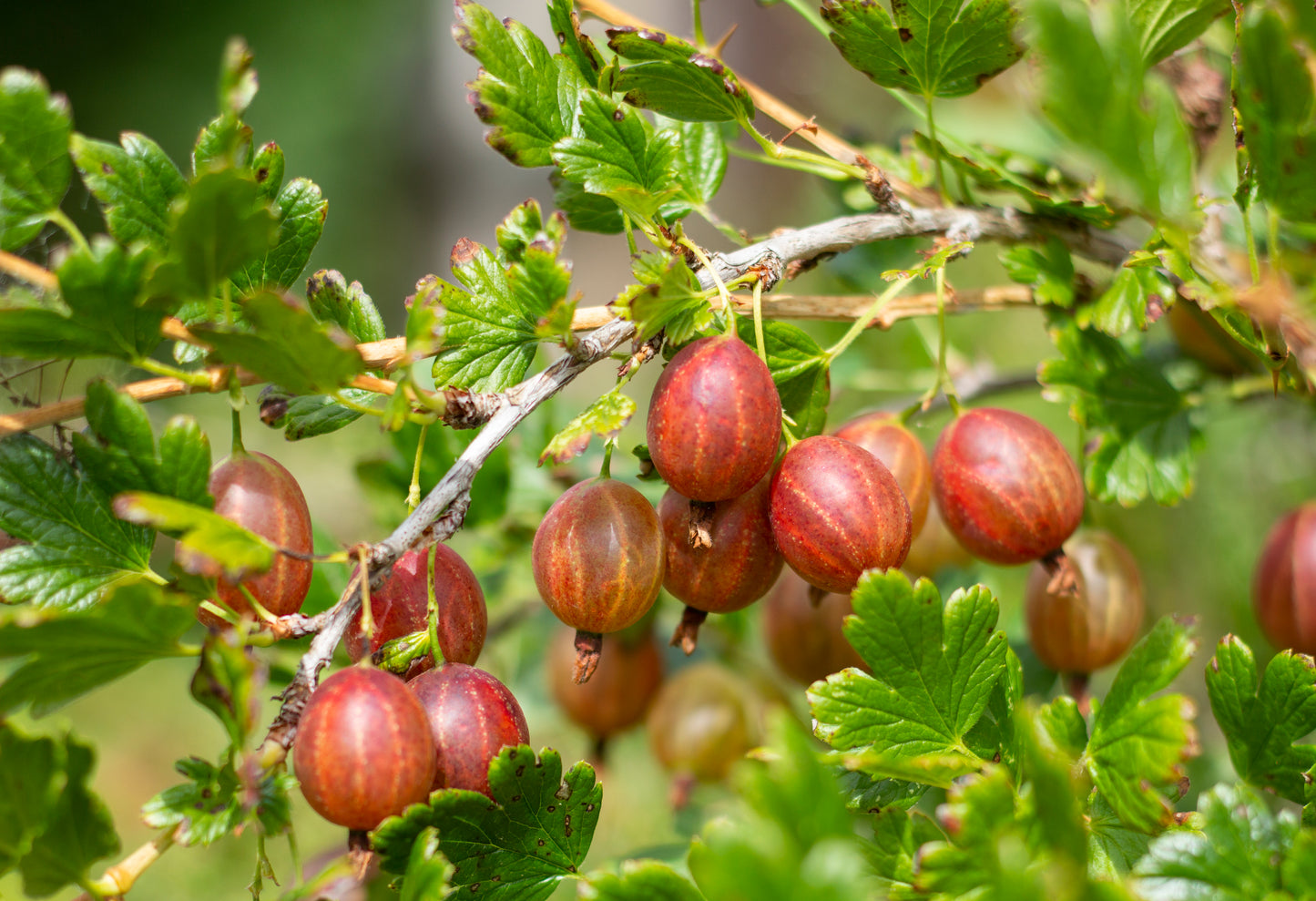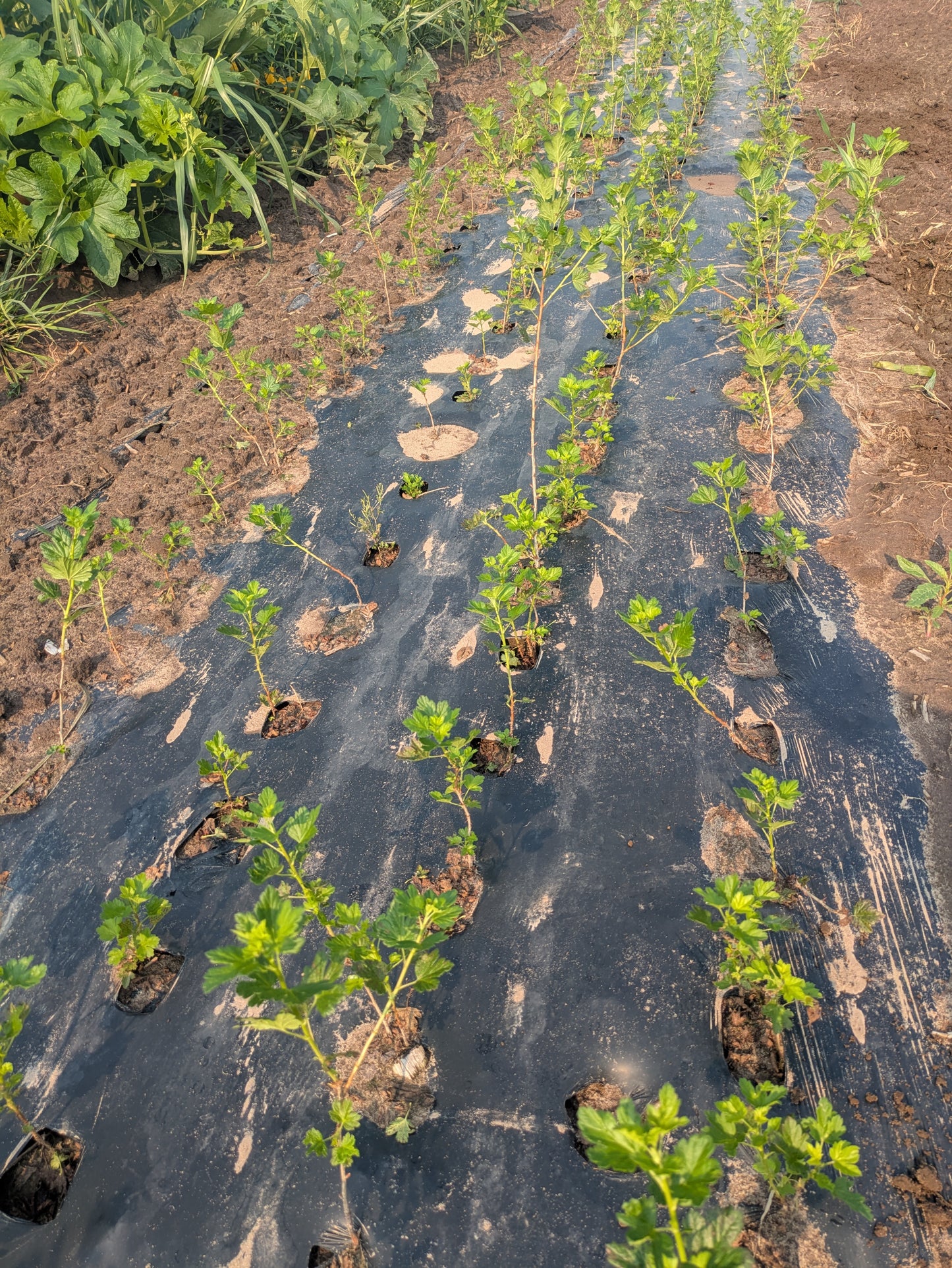Gooseberry - Bare Root
Gooseberry - Bare Root
Out of stock
Couldn't load pickup availability
WE DO SHIP BARE ROOT PLANTS. Shipping will be calculated and charged at payment.
Suited for USDA Plant Hardiness Zones: 2-6
Bare roots can be shipped March-May.
Gooseberries must be ordered in Bundles of 15.
Our Gooseberries measure 10''-24''.
Will it thrive?
Stop! Before you buy these gooseberries....are you sure they will thrive in your soil and climate? To be sure, you should prepare a Compass Report for your farm at CanopyCompass.com.
Gooseberry Descriptions
Gooseberry Cultivars
Gooseberries are self-fertile. However yields may increase with cross pollination.
Jeanne
Origin: USDA Agricultural Research Service (ARS) National Clonal Germplasm Repository (NCGR) in Corvallis, Oregon, in 2006
Fruit Qualities: Maroon-red, late ripening, medium sized, full and sweet
Plant Characteristics: Upright with thorns, disease resistant, machine harvestable
Captivator
Origin: Central Experiment Farm in Ottawa, Canada. Bred in the mid-1930's from a cross bet
Fruit Qualities: Sweet/tart, small, firm
Plant Characteristics: Early ripening, smaller spread, good for mechanical harvest
Hinnonmaki Red
Origin: Developed by Pertti and Kari Karhunen in Finland in the 1970's
Fruit Qualities: Light purple, medium sized, good tasting
Plant Characteristics: Moderate disease resistance, upright growth form, machine harvestable
Growing Recommendations
Instructions for Planting Bare-root Gooseberries
When Your Trees Arrive
-
Plant bare-root trees before they break dormancy (buds begin to swell or open).
-
Your trees will arrive wrapped in a plastic liner with the roots kept damp with moist sawdust.
-
Keeping trees cool before planting is essential. 40-50 degrees is a good target.
-
If you cannot plant them within a week or keep them cool, temporarily plant the bundle of trees in a bucket and cover it with a medium such as peat moss.
Site Preparation
-
If planting into existing sod, make sure you kill any tall fescue, orchard grass, brome, or alfalfa within
-
a few feet of the planting area.
-
A 3% or higher concentration of Roundup will work if applied in the morning of a warm sunny day (70F or higher if possible).
-
Re-seed the area with a turf-type mix of perennial ryegrass and fine-leaved fescue such as creeping red fescue, hard fescue, Chewings fescue, and medium Dutch white clover.
-
For broadcast seedings, seed each grass at 10# per acre and clover at 1-2# per acre.
-
Space chestnuts at 20’ X 20’ - that is, 20’ apart within rows and rows at 20’ apart. This will amount to just over 100 trees per acre.
-
Lay out and flag the field beforehand, using different colored flags for alternate rows. A square grid will be easier to mow in future years.
Planting
-
Keep trees in the shade always, and keep the roots covered and moist.
-
Take just a few trees at a time out of the bag and put them in a five-gallon bucket with enough water to cover the roots. Note: This is only at the planting time; do not leave the roots soaking/fully submerged for an extended period.
-
Dig a hole that accommodates the root system without crowding, folding, or bending roots around the sides of the hole.
-
Prune off stringy, dangling roots that hang too far below the root mass. Hold the tree with one hand and backfill with the other as you plant. Hold the tree with the root crown exactly even with the soil line. The root crown/crown is the point at which the rusty bark color on the roots changes to the olive green color on the trunk.
-
You must not succumb to the temptation to plant the tree “just a little bit deeper.” Planting any part of the trunk below the soil line will kill the tree.
-
Firm the soil around the tree first with your hand, then your toes—not your heel.
After Planting
-
If you have deer or rabbits in the area, apply a 5’ tall vented tree shelter and stakes (available at Canopy Nursery).
-
The tree shelter is a very good idea, even if you don’t have any varmints to worry about, as it will make the tree become established and bear nuts sooner than it will without a shelter.
-
Tree shelters will also save a great deal of pruning labor. Put tree shelters on the trees as soon as possible after planting.
-
Water the trees the first year, any time you go more than a week or two without at least an inch of rain.
-
Weed control is very important. Only a trained professional should apply chemicals. Your local NRCS office should have an up-to-date list of licensed applicators.
-
Using weed mats or landscape fabric cut into 3x3 foot squares is an excellent alternative to chemicals.
-
Use 6” turf staples to secure the corners and edges of the weed barrier.
-
Keep the grass between the trees short, especially while shelters are on the trees. Tall grass/weeds use a lot of moisture and provide a habitat for mice. Mice nesting inside tree shelters almost always girdle the trees, which will kill them.
We recognize these factors may be overwhelming, but we are here to offer support and assistance on your tree-planting journey! Please schedule a call if any of these instructions need clarification or if you have any questions or concerns.





